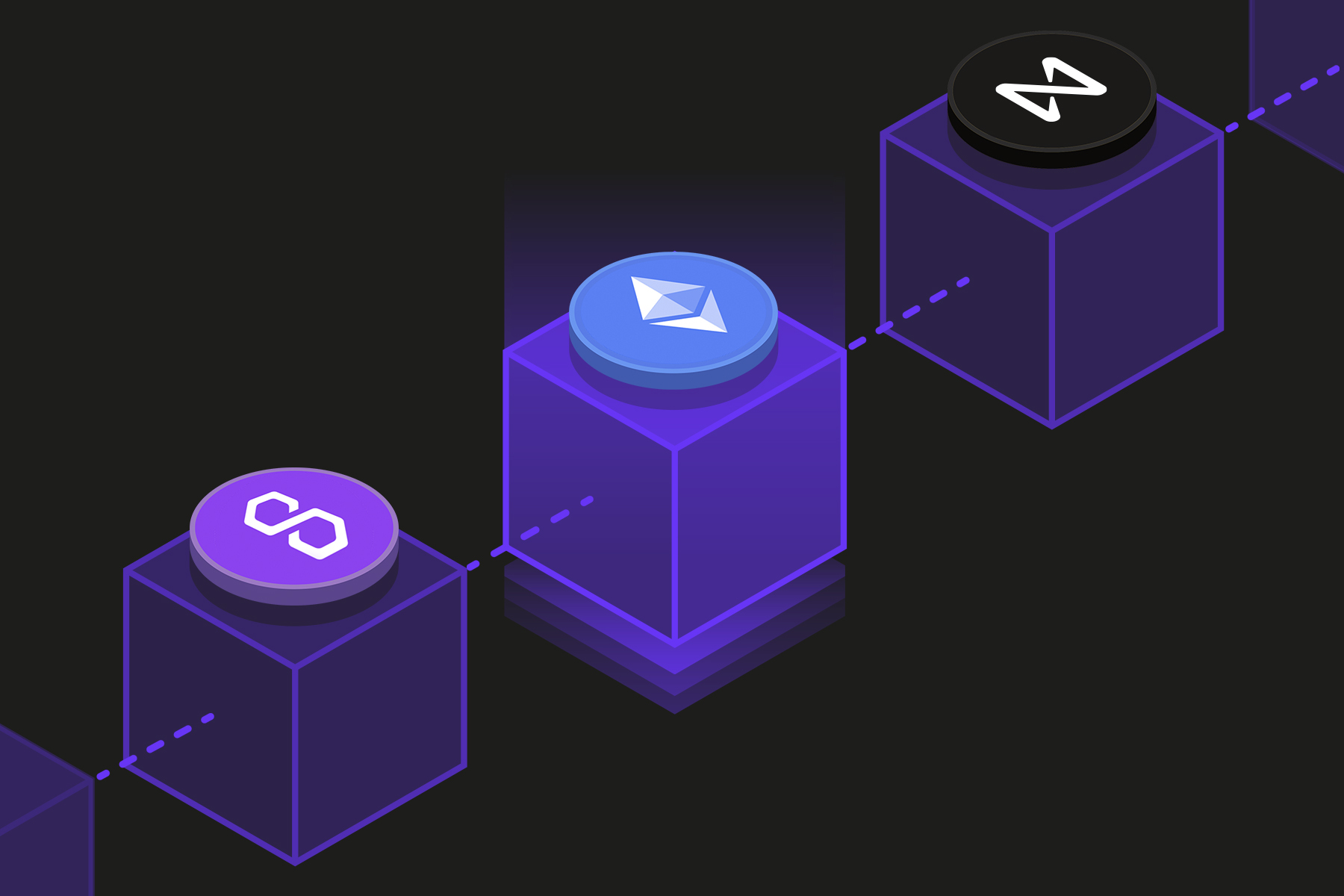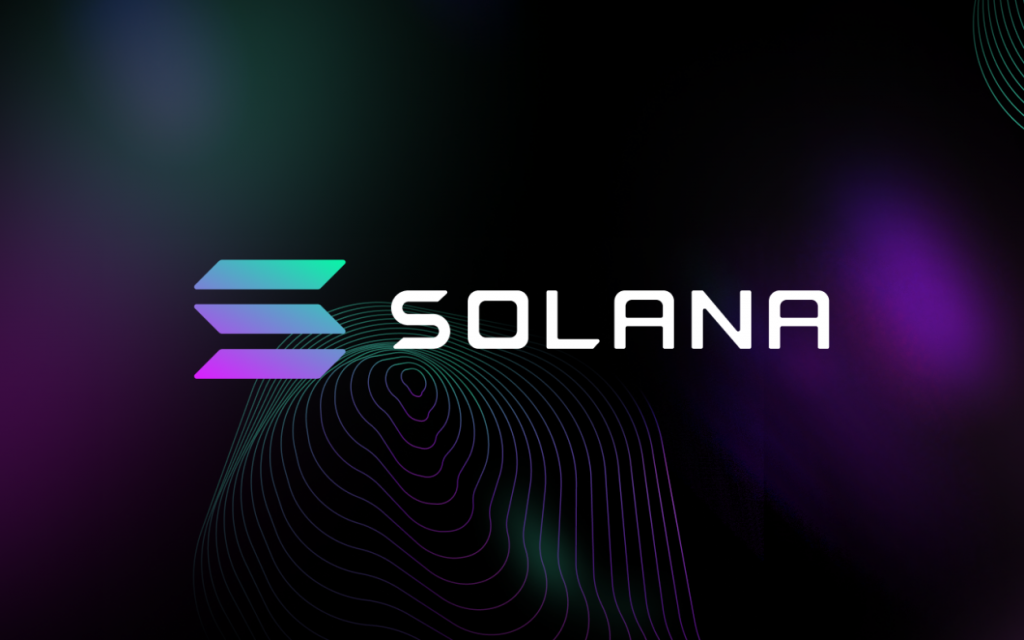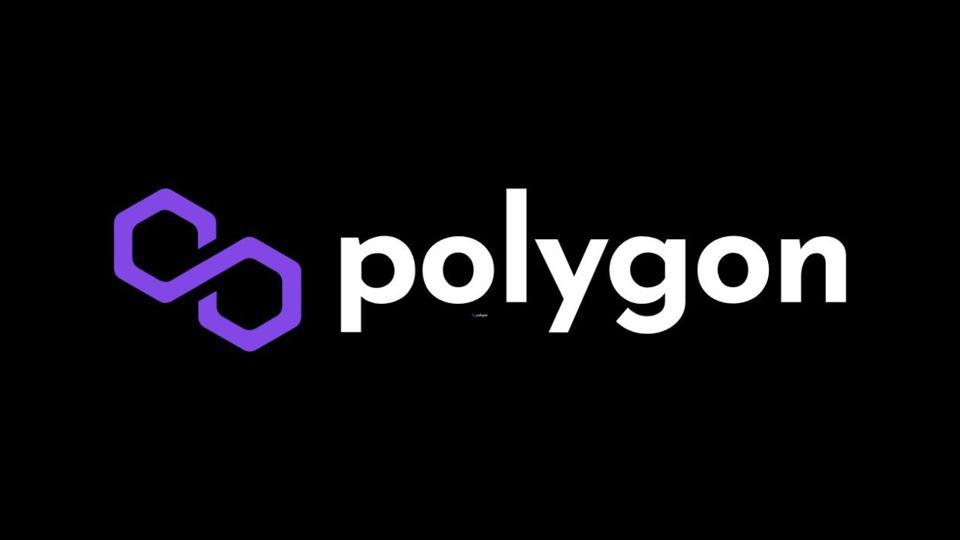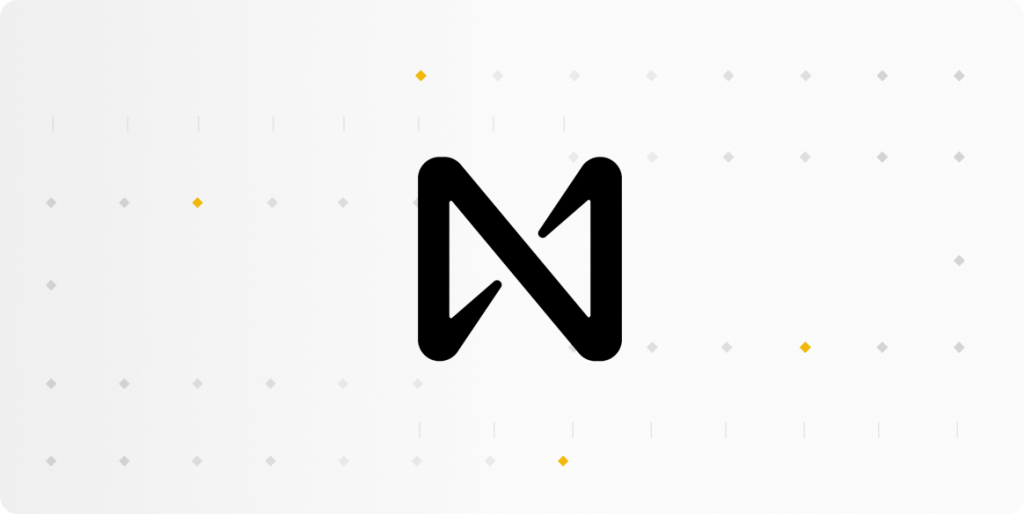Published 23rd June 2023
Which Blockchain Should I Use for My Project?

In 2009, the anonymous Satoshi Nakamoto unveiled the world’s first blockchain: Bitcoin. Since then, several other blockchains have come into existence, each with their own advantages and disadvantages. Picking one for your web3 project can be hard, but Avark is here to help.
For a web3 developer, the number of blockchains can seem overwhelming, but you’ve come to the right place. Here we have compiled a list of the five strongest blockchains for a budding web3 project, alongside their pros and cons so you can make an informed decision.
Things To Consider
There is a lot of criteria to consider when making your choice of blockchain, but there are a few factors that stand out as the most important:
- Security: The blockchain you use should have a proven track record of security, not only for yourself but also for the users you intend to attract. Web3 is an industry built on the security of decentralisation; for a developer, building on web3 is more secure than traditional applications, which require a central database. Building on a secure blockchain can give yourself and your users peace of mind that they’re data and assets are safe.
- Scalability: If you intend on your application becoming a runaway success, you should make sure that the blockchain you use can handle the expected traffic.
- Your budget: The cost of building and running your project on a blockchain will vary depending on the blockchain you choose. It is important to factor in the cost of gas fees, node operation, and other costs when making your decision.
- Your project: The type of project you’re intending to make should impact your decision. For example, if you intend to make a decentralised exchange, then you should pick a blockchain with support for the most tokens, like Ethereum or Avalanche. Or if you are making a gaming app, then something fast like Solana might be a better option.
Making the right choice about which blockchain to build your web3 project is hard, as each blockchain has its own advantages and disadvantages. Ultimately, the choice is yours, but you can use this guide to help you weigh up the pros and cons.
Ethereum

The second biggest cryptocurrency by market capitalisation behind Bitcoin, this seminal project changed the web3 space forever with the introduction of smart contracts.
Advantages of Ethereum
Sheer size
It has been estimated that 250,000 developers already build on Ethereum, with nearly all of the top 100 blockchain projects built atop the blockchain. It has an active development team that is constantly delivering consistent updates that improve the platform’s functionality.
Fully decentralised
Effectively decentralised, ETH has 300,000 nodes across the world, avoiding risks of censorship and improving security on the platform. Nodes are responsible for storing and processing data on the network by storing a full copy of the blockchain. They can then validate new blocks added to the blockchain and make sure that transactions are not double spent.
Proven track record
Ethereum has the benefit of longevity, being active since 2014 has given the dev team years of experience, resulting in a mature project that has already proven it can stand the test of time. You can also be sure that any potential security flaws would most likely have been exposed by now.
Disadvantages of Ethereum
Poor scalability
Currently, Ethereum has serious issues with scalability resulting in high gas fees for its users and congestion on the network. As it stands, Ethereum only supports 30 transactions per second (tps), diminishing the user experience and being far lower than all of its competitors.
However, it is worth noting that the Ethereum 2.0 update is set to address most of the network’s pitfalls, and is announced to be rolled out in multiple stages over 2023 and 2024, with the switch from PoW to PoS already done.
The introduction of sharding is likely to be the most significant of the changes, as it will drastically improve transaction speeds on the blockchain, possibly increasing Ethereum’s transactions per second to 100,000.
First mover
Suffers from being the ‘first mover’, as in the first to trial its innovative concepts, allowing others to follow in their footsteps, learn from their mistakes and possibly build a better network.
Many other chains, such as Solana, have become known as ‘Ethereum killers’, building their networks to tackle the extremely high gas fees and slow transaction speed, whilst keeping all of the things Ethereum does well. This could come to bite Ethereum in the future, although this is unknowable.
Our Verdict
If you are an experienced developer with some financial backing, then Ethereum might be a great choice for your project, as it operates as the essential backbone of the industry. However, its popularity comes as a double-edged sword, as any developer would face fierce competition building on Ethereum, and would need a strong marketing idea to become the next ‘big thing’.
The high gas fees and long wait times would also prove to be quite daunting for users more accustomed to web2 infrastructure, so if your project is intended to attract less knowledgeable users, then Ethereum might not the best choice.
Solana

The closest competitor to Ethereum is Solana, a high-speed network that is extremely cost-effective compared to the former.
Advantages of Solana
High speeds
Boasting some of the fastest transaction speeds in the industry, Solana can process up to 65,000 transactions per second with exceptionally low gas fees (around $0.01). This is much faster than Bitcoin’s mere 5 tps and Ethereum’s 30 tps, it also beats out Polygon’s 7000 tps by a big margin. Currently, Solana’s speeds are unrivalled thanks to their Proof of History consensus model.
Backed by the industry
Billions of users are already onboard (including several notable names like Google, Meta and Discord) without sacrificing transaction speeds. This sort of support from major brands like Meta and Google is hugely beneficial in an emerging industry where trust is relatively low, not only to users but also to other businesses looking to enter the industry.
Lots of support
Solana Developer Hub provides developers with documentation, tutorials and support to help the less experienced get their projects off the ground. These materials go through the basics of working on Solana, introducing developers to the terminology on the platform and giving incrementally harder challenges to complete.
Disadvantages of Solana
Centralisation
Some critics have raised concerns about its potential centralisation, despite it being a decentralised network by definition. This is because Solana’s unique Proof-of-History model could give an advantage to larger validators on the network. The PoH model can be computationally expensive, which can lead to centralisation of the network.
History of downtime
The Solana network has gone down several times, including once because of a hack between the Solana-Ethereum bridge that led to a $320 million loss of funds. The Solana team has been working to address the issues that have caused the outages, and has implemented a number of improvements to the network’s stability. However, the outages have raised concerns about the reliability of Solana as a blockchain platform.
Lack of interoperability
Because PoH is a relatively new consensus mechanism, it has limited adoption outside of the Solana network, which could make it more difficult to integrate with other blockchain networks or decentralised applications.
Our Verdict
If you are looking for a blockchain that is more scalable and efficient than Ethereum, then Solana stands as a similarly strong choice. It boasts some of the fastest speeds in the industry and has a growing community, although its future is perhaps uncertain.
Solana attracted the backing of some unsavoury characters in the industry, such as Sam Bankman-Fried, the now infamous head of the failed FTX exchange. Solana’s native currency SOL took a major dive in value after the collapse of FTX, sitting at $10 from a $259.99 all-time high.
Polygon

Polygon is a Layer 2 scaling solution for Ethereum, which aims to improve the speed and scalability of Ethereum transactions without sacrificing its security and decentralisation.
Polygon combines a Proof-of-Stake system with a system called Plasma, which in simple terms breaks off some of the work onto a ‘sidechain’ to enable the processing of transactions without clogging up the main network.
Advantages of Polygon
Low-gas alternative to Ethereum
Polygon offers significantly lower gas fees than the Ethereum mainnet without sacrificing compatibility with the Ethereum Virtual Machine (EVM). This can make testing and deploying complex dApps more viable for developers, as well as encouraging more users to use those dApps and therefore generate more revenue for your project. Developers can also port their Ethereum dApps to Polygon and vice versa.
Lots of support
Polygon offers a wide range of developer tools, including APIs, SDKs and documentation, making it easier for developers to build on the network. There is an active community of developers to help you get your project off the ground.
Disadvantages of Polygon
Not as decentralised
According to some reports, Polygon’s leadership holds the majority of private keys to access the protocol’s central multi-signature crypto wallet. Some have concerns these central points of failure can make it easier to hack into Polygon. Also, the majority of Polygon’s native currency, MATIC, is concentrated in the hands of a few large holders. This could pose a risk to the security of the network if these holders were to sell en masse.
Competition
Polygon is just one of many Layer-2 scaling solutions for Ethereum. This means that Polygon faces competition from other networks. Additionally, gas fees on Polygon are higher than some other Layer-2 solutions, such as Arbitrum or Optimism.
Our Verdict
If low costs are a preference, you could consider Polygon, which is similarly fast and efficient. The Layer-2 scaling solution solves many of the drawbacks associated with Ethereum, without sacrificing compatibility with Ethereum itself. However, Polygon is centralised, leaving your project culpable to the decisions of a select few and a single point of failure if things should go wrong.
Polygon gas fees are low compared to Ethereum, although comparatively lower than fees on rival Layer-2 blockchains.
Avalanche

Avalanche has been referred to as a Layer-0 blockchain, meaning it operates as the infrastructure for other blockchains and dApps to communicate with one another.
Avalanche uses a unique consensus algorithm to enable high transaction speeds and low transaction fees, with subnets that allow for greater customization. Transactions are validated by a committee using a weighted random algorithm, and the platform has high interoperability with other blockchains.
Advantages of Avalanche
Cross-chain interoperability
Avalanche supports cross-chain compatibility, meaning that dApps built on Avalanche can interact with dApps on other blockchains. Interoperability is highly coveted as it makes the development process a lot easier, enabling devs to access assets and features of other blockchains without having to go through the cumbersome process of converting to different blockchains.
Flexibility
Avalanche allows developers to create custom blockchains in the form of subnets that are tailored to the specific needs of their dApps. Using subnets, developers will be able to choose their own consensus mechanism, set their own block time and set their own gas limits, amongst other things.
Avalanche Bridge
The Avalanche Bridge is a decentralised protocol that allows users to transfer assets between blockchains. This enables developers to access liquidity from other blockchains and access DeFi features from two different applications. The bridge is built on a scalable and secure blockchain platform, and it uses a number of security features to protect the assets that are being transferred.
Disadvantages of Avalanche
Limited tooling
As Avalanche is a relatively new platform, there isn’t as many development tools and libraries available for building applications as there is for Ethereum. This could mean that developers need to build their own tools or adapt existing ones to work on Avalanche.
Adoption
While Avalanche is certainly gaining popularity thanks to its high-speed and cross-chain compatible infrastructure, it still has a small user base compared to some other blockchain platforms. This means that it may be harder to gain adoption for applications built on Avalanche, particularly in mainstream industries.
Smart Contract Language
Unlike Ethereum, which uses Solidity as its primary smart contract language, Avalanche uses a new language called Avalanche Script or AVM. This means that developers would have to learn a new programming language, which may slow down the development process and make it harder to find other developers with the necessary skills.
Our Verdict
Avalanche is a great choice for a developer looking for cross-chain capabilities, as it boasts the greatest interoperability of the bunch. Its compatibility with the Ethereum Virtual Machine means developers can easily move over dApps they have already built on Ethereum onto Avalanche.
The main downside is its unique programming language and lack of a very large community, although this could change in time. It is quite a complex blockchain, which makes it currently quite inaccessible to first-time developers, but it is hoped that as the community continues to grow there will be more documentation and tutorial content made available.
NEAR Protocol

NEAR Protocol is a layer-1 blockchain that was designed to be scalable, secure, and easy to use. It is based on the NEAR Proof-of-Stake consensus mechanism, which is designed to be highly efficient and secure.
NEAR also uses a novel sharding mechanism called Nightshade, which could allow it to theoretically scale to millions of transactions per second.
Advantages of NEAR
Developer friendly
NEAR supports a number of high-level programming languages, including Rust, C++, and TypeScript. This makes it easy for developers to build dApps in a language that they are familiar with. The team at NEAR also quite often provides funding and grants to projects on the network. NEAR specifically strives for mass adoption, making the platform more accessible to new starters in web3 through the use of a user-friendly interface.
Sustainability
As a PoS network, NEAR does not consume vast amounts of electricity to validate its network, and has even been rated carbon neutral by climate specialists, South Pole.
Disadvantages of NEAR
Limited liquidity
NEAR Protocol has a small market capitalisation compared to its competitors, making it more difficult to buy and sell NEAR tokens. This can lead to increased volatility of user assets on the platform, and make it harder for holders to move in and out of positions, as there might not be enough buyers or sellers on the platform.
Limited user base
The NEAR Protocol has a smaller user base than other major blockchains despite its ease of use. This has obvious drawbacks of less engagement which could lead to lower revenues, although if your project is engaging enough this could be countered. It is still under development and could improve its popularity in the future, but for now there is less demand for dApps on the NEAR network.
Concerns about scalability
Since NEAR is still in its early stages, it is hard to say whether NEAR will hold up if the platform were to become more popular. It is designed to be scalable, but this is as of yet untested. If NEAR does not scale well, it could become less attractive to developers and users.
Our Verdict
NEAR Protocol stands as a smart choice for projects attempting to attract a more mainstream audience, as the platform has exceptionally low gas fees. NFT ticketing company Seatlabs even managed to absorb the gas fees for their customers, providing a seamless user experience much more similar to web2.
Due to its funding DAO, developers can apply for grants or funding to build their web3 project, eliminating the need for venture capital, making it an attractive option for new starters in the field.
